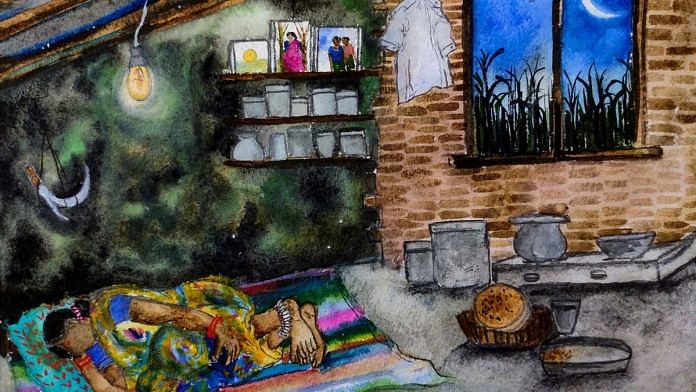A good night’s sleep is a distant memory for Sheela Waghmare.
“I cannot sleep at night…it has been years,” says Sheela, 33, seated cross-legged on a godhadi spread on the floor, her red-rimmed eyes glazed by a deep pain. As she describes her long night hours, her body is wracked by sobs she tries to stifle. “I cry all night. I feel…I feel like I am suffocating.”
Sheela lives on the outskirts of Rajuri Ghodka village in Maharashtra’s Beed district, about 10 kilometres from Beed town. In her two-room brick house, when she sleeps, her husband Maanik and their three children, Karthik, Babu and Rutuja, by her side, her muffled cries awaken the others, she says. “My crying disturbs their sleep. Then I try to sleep with my eyes closed tight.”
But sleep does not come. And the tears don’t stop.
“I always feel sad, anxious,” Sheela says. After a pause, she sounds irritated. “It all started after my pishvi [uterus] was removed. It changed my life forever.” She was only 20 years old when she underwent a hysterectomy in 2008. Since then, she has suffered crippling sadness, sleepless nights, inexplicable bouts of irritation and physical aches that persist for long periods.
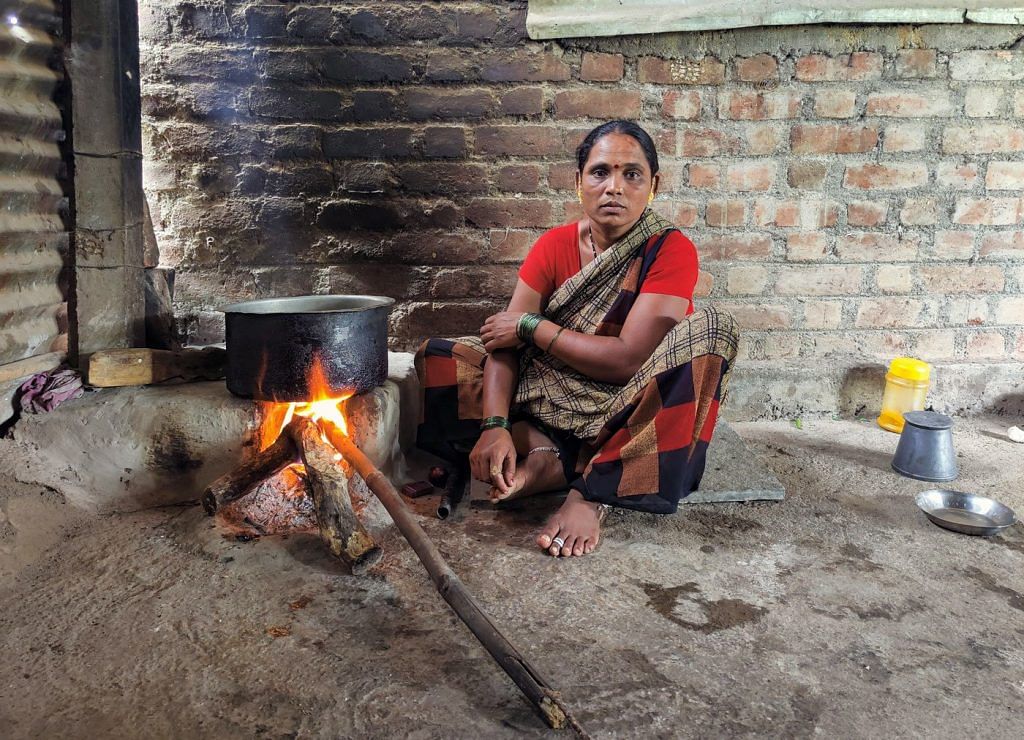
“Sometimes I get angry at the children for no reason. Even if they ask for something lovingly, I shout at them,” Sheela says, looking helpless. “I try. I really try not to get irritated. I don’t understand why I behave this way.”
Married to Maanik when she was just 12 years old, Sheela was a mother of three before she turned 18.
She and Maanik are among the approximately 8 lakh oos-tod kaamgaar , cane cutting workers, who seasonally migrate from the Marathwada region during the six-month sugarcane harvest season, and live and work in the cane fields of western Maharashtra and Karnataka from October to March. The rest of the year, Sheela and Maanik, who don’t own any land, work as agricultural labourers in their village or villages nearby. They belong to the Nav Bauddha (Neo Buddhist) community.
Also read: Health card, medical audit, SOP for doctors — Maharashtra bid to save cane labourers’ wombs
Sheela’s experience with post-hysterectomy ailments is not a rare occurrence in this part of Maharashtra. A seven-member committee set up in 2019 by the state government to investigate the unusually high numbers of hysterectomies among female cane-cutters in Beed found that psychosomatic distress was common among them.
Chaired by Dr. Neelam Gorhe, deputy speaker of Maharashtra Legislative Council at the time, the committee conducted the survey in June-July 2019 and covered 82,309 women in the district who had migrated to harvest cane at least once. It found that of 13,861 women who had undergone a hysterectomy, over 45 per cent – 6,314 – later experienced mental and physical distress ranging from difficulties in sleeping, depressed mood and nihilistic thoughts, to aching joints and back pain.
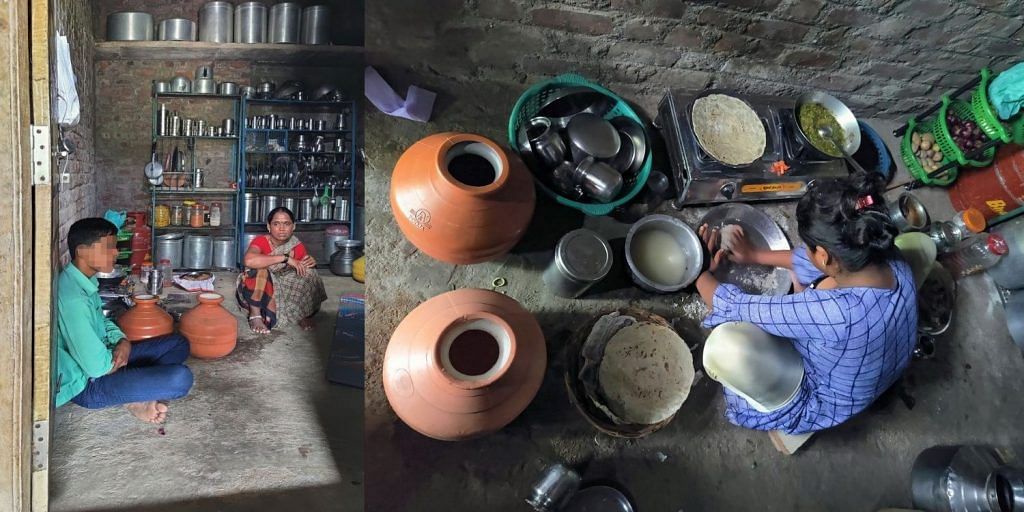
Hysterectomy is a complicated procedure with adverse consequences on the woman’s health in the short and long terms, says Dr. Komal Chavan, a Mumbai-based gynaecologist and consultant at V.N. Desai Municipal General Hospital. “In medical terms, we call it surgical menopause,” Dr. Chavan says.
In her post-surgery years, Sheela has experienced a long list of physical ailments including joint pain, headache, backache and constant fatigue. “After every two-three days, I get some pain,” she says.
Pain-relief ointments and oral medication offer momentary relief. “I apply this cream for my knees and back pain. I use two tubes in a month,” she says, showing a tube of diclofenac gel that costs Rs. 166. There are also pills prescribed by a doctor. Twice a month, she is administered a glucose infusion through an intravenous drip, to help with the fatigue.
Also read: About 50 per cent of women aged 15-24 years still use cloth for menstrual protection: NFHS-5
The medication and consultation at a private clinic a kilometre away from her house costs her Rs. 1,000-2,000 every month. The Civil Hospital in Beed is 10 kilometres away from her village, so she prefers to walk to the clinic instead. She says, “Who will go that far, spending more on gaadi ghoda [transportation]?”
The medicines do not help with the emotional upheaval. “ Asa sagla traas aslyavar ka mhanun jagaava vatel ? [With all these troubles, why would I feel life is worth living?]”
Hormonal imbalances caused by a hysterectomy may trigger depression and anxiety, apart from physical side-effects, says Dr. Avinash De Sousa, a Mumbai-based psychiatrist. The intensity of ailments related to a hysterectomy or dysfunctional ovaries varies, he adds. “It differs from case to case. Some women have severe effects, and some may not experience any symptoms.”
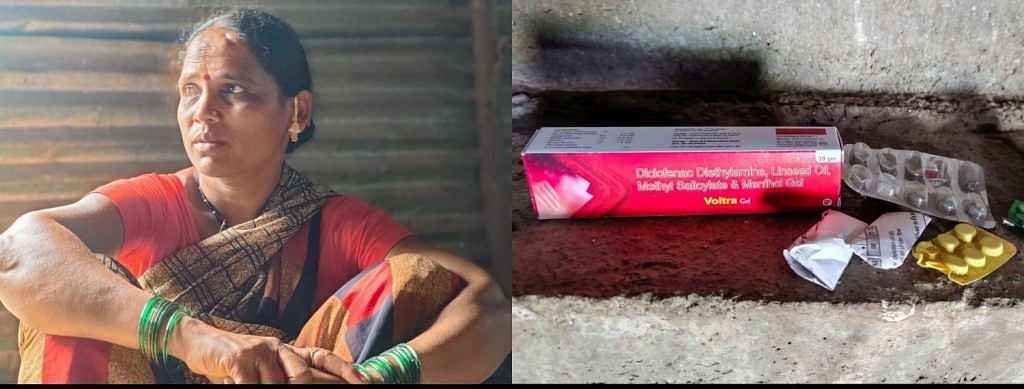
Even after the surgery, Sheela has continued to migrate with Maanik to western Maharashtra to cut cane. She usually travels with her family to a cane-crushing factory in Kolhapur, nearly 450 kilometres from Beed.
“We used to manage to cut about two tons of sugarcane a day, after working 16 to 18 hours,” Sheela says, recalling her pre-surgery days. Every ton of the cut and bundled stalks was paid Rs. 280 per ‘ koyta ’. The word koyta literally means the curved sickle used to hack the tough cane stalks that grow as high as 7 feet, but colloquially, it refers to a couple that cuts cane together. A two-member unit hired by labour contractors is paid a lump sum in advance .
“After six months, we would earn nearly Rs. 50,000 to Rs. 70,000,” says Sheela. Ever since her hysterectomy, it has been hard for the couple to finish cutting and bundling even one ton of cane in a day. “I can’t lift heavy loads, and can’t cut as speedily as before.”
But Sheela and Maanik took an advance payment of Rs. 50,000 in 2019, at an interest of 30 per cent per annum, to repair their house. So they have to keep working to pay off that sum. “It is never ending,” Sheela says.
*****
Back-breaking labour in the cane fields is most challenging for women on their monthly period. While there are no toilets or bathrooms in the fields, their living arrangements are equally rudimentary. The koytas , sometimes accompanied by their children, live in tents close to the cane factories and fields. “Working during paali [menstruation] was difficult,” Sheela remembers.
Even a day’s leave comes at a cost, with the day’s pay docked as a fine by the mukaadam (labour contractor).
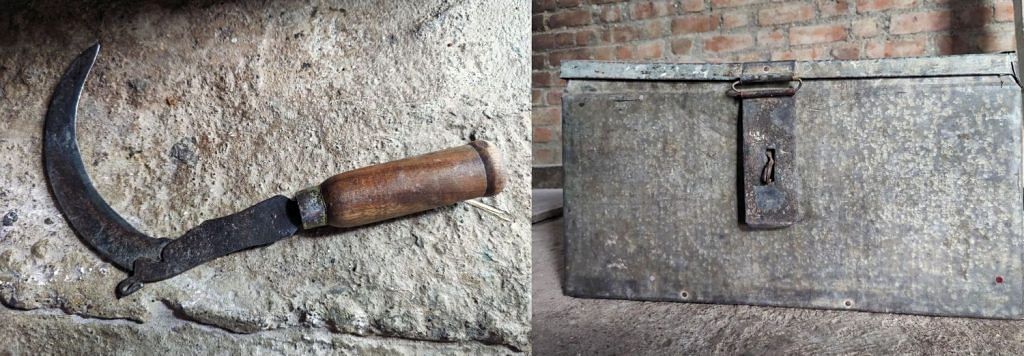
Sheela says women cutters go to work wearing cloth pads made out of their used cotton petticoats. They work about 16 hours a day without changing it. “I would change it at the end of the day’s work,” she says. “ Raktane purna bhijoon rakta tapkayche kapdyatoon [Fully soaked, blood would be dripping from it].”
Without proper sanitation facilities or adequate water to wash the used cloth pads, or a space to dry them, she would often use the still-damp pads. “It would smell, but drying it under the sun was uncomfortable; there were so many men around.” She didn’t know about sanitary pads. “It was only when my daughter began to get her periods that I found out,” she says.
She buys sanitary pads for 15-year-old Rutuja. “I don’t want to make any compromise on her health.”
Also read: India’s total fertility rate declines from 2.2 to 2.0: National Family Health Survey
In 2020, Makaam, a Pune-based coalition of women’s organisations working on advocacy for women farmers, released a survey report of 1,042 sugarcane cutters interviewed in eight districts of Maharashtra. The report revealed that 83 per cent of female sugarcane cutters use cloth during their periods. Only 59 per cent had access to water to wash these cloth pads and nearly 24 per cent reused the wet pads.
The unhygienic practices cause recurrent gynaecological issues such as excessive bleeding and painful periods. “I used to have frequent pain in my lower abdomen, and thick white vaginal discharge,” Sheela says.
Infections from poor menstrual hygiene are common, and treatable with simple medications, says Dr. Chavan. “A hysterectomy is not the primary option but a last resort in case of cancer, uterine prolapse or fibroids.”
Sheela, who cannot read or write beyond signing her name in Marathi, had no idea that infections could be cured. Like many other women cane-cutters, she approached a private hospital in Beed town, hoping to get medicines to reduce the pain so that she could continue working during her periods and avoid paying fines to the labour contractor.
At the hospital, a doctor warned her about the possibility of cancer. “No blood test, no sonography was done. He said my uterus has holes in it. And that I would die of cancer in five-six months,” Sheela recalls. Frightened, she agreed to go through the surgery. “On the same day, a few hours later, the doctor showed my removed pishvi to my husband, saying look at these holes,” she says.
Sheela spent seven days in hospital. Maanik collected the total expenses of Rs. 40,000 by emptying out their savings and borrowing from relatives and friends.
“Most of these surgeries are done at private hospitals,” says Ashok Tangde, a Beed-based social activist working to improve the conditions of sugarcane workers. “It is inhuman how doctors perform a serious surgery like hysterectomy without any medical reason.”
The government-appointed committee had confirmed that over 90 per cent of the surveyed women had undergone surgeries at private clinics.
Sheela received no medical advice on the possible side effects. “I became free from periods, but I am living the worst life now,” she says.
Caught amid a fear of wage cuts, oppressive rules of labour contractors and profit-hungry private surgeons, female sugarcane workers across Beed district have common narratives to share.
*****
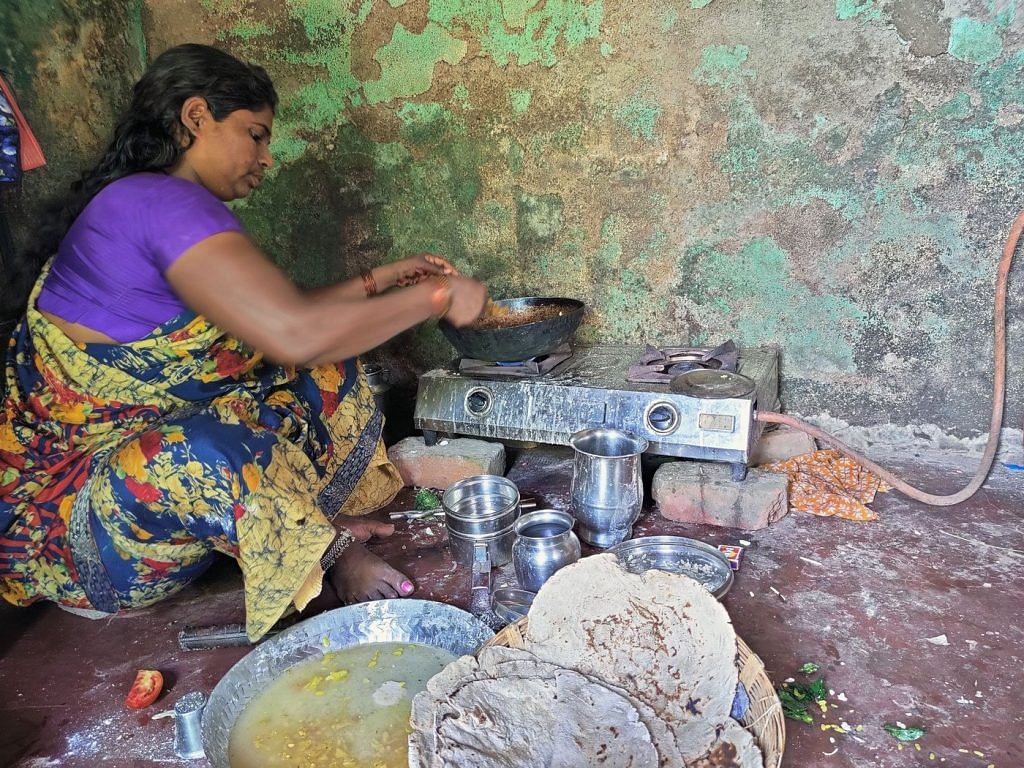
| Jyoti Shinoli/ People’s Archive of Rural India
The story of Lata Waghmare of Kathoda village, six kilometres from Sheela’s home, is not very different.
“I don’t feel like living,” says Lata, 32, who had a hysterectomy when she was just 20 years old.
“There is no such thing as love between us now,” she says, about her relationship with her husband Ramesh. Things started to change a year after her surgery, as she grew more distant and irritable.
“I would push him away whenever he came close,” Lata says. “Then there would be quarrels, shouts.” Her persistent rejection of his sexual overtures ended her husband’s desire, she says. “He doesn’t even talk to me properly now.”
Her day is spent completing household chores before going to work as an agricultural labourer. She works in others’ fields in her own village or in nearby villages, earning Rs. 150 in daily wages. She suffers from pain in the knees and back, and gets frequent headaches. For relief, she pops pills or tries out home remedies. “How will I feel like going close to him?” she says.
Married at the age of 13, Lata gave birth to her son Akash within a year. He also works with his parents in the cane fields, though he studied till Class 12.
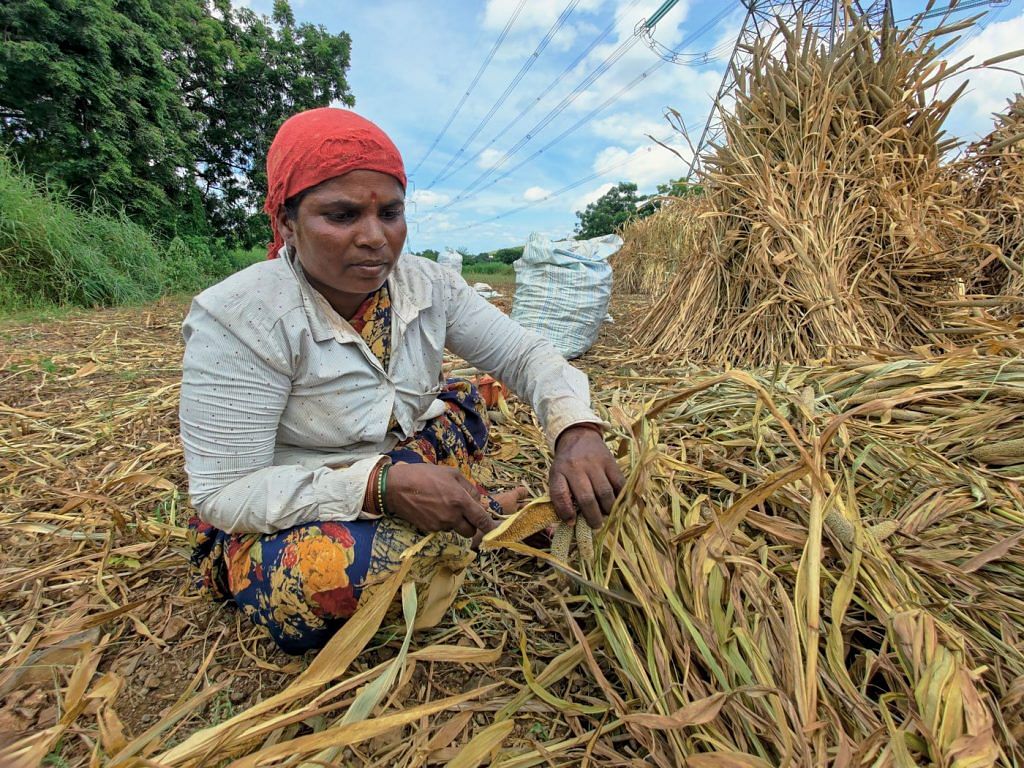
Lata had a daughter next, but the little girl was crushed to death under a tractor in a sugarcane field when she was five months old. With no amenities for infants or children, cane-cutting couples are forced to leave babies in a clearing near the fields while they work.
She finds it difficult to describe the tragedy.
“I don’t feel like working, I just feel like sitting and doing nothing,” she says. Her lack of interest in any work leads to errors. “Sometimes I keep milk or sabji on the stove, and even if it’s overflowing or burning, I don’t react.”
Despite the loss of their daughter, Lata and Ramesh could never afford to stop migrating in the cane-cutting season.
Also read: Can’t learn, can’t work, can’t even cross river: Life in 3 of India’s 4 poorest districts, all in UP
Lata later gave birth to three daughters, Anjali, Nikita, and Rohini. And she continued to take her children to the fields. “If you don’t work, children will die of starvation. If we go to work, they will die in accidents,” Lata says darkly. “What is the difference?”
With the pandemic-induced closure of schools, and online education impossible to access with no smartphone at home, her daughters’ education ended abruptly. Anjali was married in 2020, and the search for suitable grooms for Nikita and Rohini is already underway.
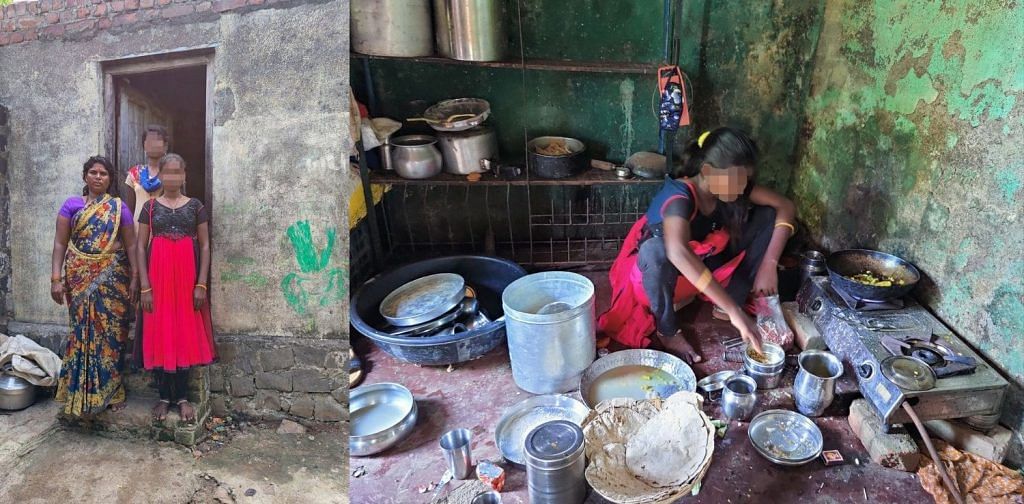
“I have studied till seventh [Class 7],” says Nikita, who began to work as a farm labourer on daily wages after March 2020 and started going with her parents to cut cane. “I want to study, but I can’t now. My parents are planning to get me married,” she says.
Almost three years since the recommendations of the Neelam Gorhe-led committee were announced, implementation has been slow. Sheela and Lata confirm that the directives to provide clean drinking water, toilets and temporary housing at cane-cutters’ place of work remain on paper.
“What toilet and what house,” Sheela rubbishes the idea that their work conditions could ever change. “Everything is the same.”
Another recommendation was to form groups of ASHA workers and anganwadi workers who could resolve the health concerns of women cane-cutters.
Asked if the village’s ASHA worker visits her, Lata says, “Nobody comes, ever. For six months after Diwali we are in the cane fields. The house remains closed.” As a Nav Bauddha family living in a Dalit settlement of 20 households on the fringe of Kathoda, they are routinely discriminated against by villagers, she adds. “Nobody comes to ask us.”

Tangde, the Beed-based activist, says the problems of child marriage and lack of trained gynaecologists in the villages’ primary health centres need to be tackled urgently. “Then there is drought, no employment opportunities,” he continues. “The issues of sugarcane workers are not limited to migration alone.”
Meanwhile, Sheela, Lata and thousands of other women are well into the current cane harvest season, living in squalid tents, hundreds of kilometres away from home, and still using cloth pads, with no access to sanitation facilities.
“I still have to pass many years,” says Sheela. “I don’t know how to live.”
PARI and CounterMedia Trust’s nationwide reporting project on adolescent girls and young women in rural India is part of a Population Foundation of India-supported initiative to explore the situation of these vital yet marginalised groups, through the voices and lived experience of ordinary people.
This article was originally published by People’s Archive of Rural India (PARI) and has been republished in partnership with Population Foundation of India (PFI). It is part of a series to raise awareness around the maternal health issues faced by mothers in the most remote areas of India. Views are personal.


